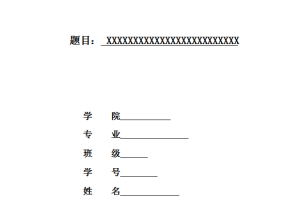IGBT是半导体新型复合型电力电子器件, 它诞生于八十年代初,发展于九十年代。 IGBT同时拥有MOS(绝缘栅型场效应管)以及BJT(双极型三极管)两者的特点:易于驱动,输入阻抗高,开关频率高,控制功率小,导通电流大,导通损耗小等。同时在当今低碳经济、倡导节能减排的大环境下,具有节能高效,适应规模化生产,易于智能化等优点。借助诸多优越特性,目前工业控制、家电产品、汽车电子、通信网络、照明等领域 已广泛应用IGBT,同时智能电网、新能源汽车、高速铁路的发展使得IGBT将拥有更为宽广的应用市场。本文主要研究PT型IGBT硅外延的常压外延生长工艺,开发IGBT高阻厚层外延的微缺陷控制方法和外延工艺的自掺杂抑制技术。
早期的IGBT是以VDMOS器件的结构原理为基础开发的,用P+衬底片巧妙替换N+ 衬底片,将PN结引入器件的背面,正向导通时背面PN结引入的电导调制效应使IGBT的电导机制由VDMOS的多数载流子(多子)导电演变成双极载流子导电,使器件能够在高的耐压条件下获得低的正向导通压降,回避了多子器件VDMOS正向导通电阻和击穿电压2.5次方的矛盾关系。因此,IGBT硅外延材料的纵向结构为特殊的N–/N+/P+的异型结构, P+为衬底部分,N–/N+为外延部分。其中 N+/P+及N–/N+需要生长极薄的外延层和陡峭的过渡区, 纵向结构一般要求两个过渡区小于10um,这对外延技术提出了很高的要求,国外先进技术一般采用分子束外延,而本课题研究的是利用常压外延设备生长具有反型、高阻、厚层特点的IGBT硅外延片。在外延工艺生产中, 厚度100 um是明显的工艺技术门槛,当外延层厚超过100 um时晶体缺陷数量将大幅增多,参数也更难控制,而本课题讨论的双层外延工艺,外层平区电阻率60Ωcm、总厚度120um,接近于常压外延的生长极限,属于厚层高阻外延范畴,使用常规工艺是无法达成的,必须采用特殊的工艺控制手段。本文主要研究部分包含以下几点:1)从IGBT功率器件的结构入手,对IGBT硅外延材料进行研究,找出外延层生长的关键控制要素;2)研究IGBT用硅外延材料生长工艺,通过对掺杂机理、扩散效应和自掺杂效应的研究,找到影响外延层电阻率过渡区及均匀性的要素;3)用H2变温变速解析法来减小自掺杂效应的影响,这也是本论文的重点技术;4)通过对理论模型及IGBT用硅外延材料特有的N/N+/P+结构的研究,得到N+层抑制高浓P型杂质对N-外延层的自掺杂效应的优化改进方案;5)提出了为控制N+/P+过渡区,使用预通掺杂剂的技术;6)通过衬底片的选取及炉腔环境的测定,对外延的原生缺陷和几何参数进行了有效的控制。通过上述理论研究,借助公司厂房搬迁,结合多次工艺实验,最终获得了一套工艺方案,得到了单片电阻率<5%,单片厚度均匀性<2%,过渡区宽度<10um,腐蚀缺陷(层错)<500cm-2,微颗粒≤30ea/pic(≥Φ0.3um),其余指标满足GB/T 14139-2009国家标准,并符合某型商用6英寸1200V/20AIGBT用(即本文的设计指标)硅外延材料。目前该型号硅外延片已进入国内某厂家量产供应阶段。
实验的成功改善了我司在IGBT用硅外延片方面生产经验不足、工艺储备薄弱的现状,显著降低了IGBT用硅外延材料高昂的制造成本,使我司IGBT硅外延材料具备了一定的市场竞争力,初步推动了国产IGBT晶圆的商业领域的普及,同时,为我国IGBT自主化生产的目标,做了上游基础材料的推动。
关键词:IGBT、 外延电阻率、外延厚度、电阻率均匀性、厚度均匀性、外延过渡区、自掺杂
Abstract
IGBT device is a part of the power devices, Although the share is smaller,but it’s developing very quickly. With the continuous development of consumer electronic products,more and more equipment will use IGBT devices.The silion epi for IGBT devices can certainly have a good development prospect. However, due to the domestic technical development imperfect reasons, As a key substrate of IGBT,the silicon epi mainly rely on import. Import epi cost is high, and its thickness restricted only 60 ~ 100 microns, only a few foreign industry can break the bottleneck, but its very costly, moreover the epi resistivity uniformity and thickness uniformity are inaccessible within 10%.Along with the increase of thickness,its defect density also will increase, the defect will serious influence electrical parameters of IGBT devices. Due to higher levels of IGBT devices, IGBT requirements for extension technology requires strict. Domestic industry can produce IGBT devices is not much, while domestic industry can produce IGBT silicon epitaxial materials is blank. Therefore It’s very necessary to research IGBT epitaxial materials.
In this dissertation,the author has worked out a method of silicon epitaxial materials for 6-inch IGBT device.
The structure of IGBT devices is N-/N+/P+,in which P+ is the part of substrate, N-/N+ are the parts of epitaxial layers. By the design requirements, the transition width of N+/P+ and N-/N+ are very narrow, and must have a special process to achieve. In the other hand as the thickness of epitaxial layer is very thick, it is easier growing defects than thin layer. Due to the high resistivity and thickness above 100um, the uniformity of resistivity and thickness is very difficulty to achieve.
So, there are many problems to be solved to achieve the silicon epitaxial materials for 6-inch IGBT device, we will do it from several aspects.Start from the growth kinetics of silicon epitaxial growth,then find the key factors that affect thickness uniformity, and further verified by experiment that auto-doping is mainly affecting the thickness uniformity of N/P+ structure epi wafer;By analysising the epitaxial layer of impurity concentration distribution,and doping、out-diffusion、auto-doping, we find the key factors that affects resistivity uniformity.Then by variational H2 purge,we control the auto-doping and solve the uniformity of resistivity,this is the most important part of this article.the N–/N+/P+ transition has been studied theoretically and experimentally,by using the way of pre-entering dopant,we get the ideal N+/P+ transition width.
Through the theoretical research, and for key technological factors on the design, combined with the experiments and analysis, Final, we have reached the design specifications .the epi resistivity uniformity<8%,transition width<5um,surface defect have meeted all index requirements. And this research is a good basis for the mass production of IGBT epitaxial materials.
Keywords:resistivity、thickness、uniformity、Transition width、auto-doping
目录
第一章 绪论……………………………………………………………………………………………………………………… 1
1.1课题背景与意义…………………………………………………………………………………………………………….. 1
1.2国内外研究现状…………………………………………………………………………………………………………….. 2
1.3研究内容与设计指标………………………………………………………………………………………………………. 3
1.3.1 研究内容…………………………………………………………………………………………………………………….. 3
1.3.2 设计指标…………………………………………………………………………………………………………………….. 3
第二章IGBT硅外延材料的基本原理……………………………………………………………………………………… 5
2.1 IGBT基本结构……………………………………………………………………………………………………………… 5
2.2 IGBT基本工作原理……………………………………………………………………………………………………….. 6
2.3 IGBT硅外延片要求……………………………………………………………………………………………………….. 7
2.4硅外延技术…………………………………………………………………………………………………………………… 8
2.4.1外延原理……………………………………………………………………………………………………………………… 8
2.4.2生长模型……………………………………………………………………………………………………………………… 9
2.4.3反应源与化学反应………………………………………………………………………………………………………. 11
2.4.4自掺杂与外扩散………………………………………………………………………………………………………….. 12
2.4.5外延层缺陷…………………………………………………………………………………………………………………. 15
2.4.6外延反应系统……………………………………………………………………………………………………………… 18
第三章 IGBT硅外延材料生长技术研究………………………………………………………………………………… 20
3.1厚度均匀性的研究…………………………………………………………………………………………………………. 20
3.2电阻率均匀性的研究……………………………………………………………………………………………………… 22
3.2.1自掺杂效应的分析………………………………………………………………………………………………………. 22
3.2.2外扩散效应的分析………………………………………………………………………………………………………. 29
3.2.3诱生缺陷的控制分析……………………………………………………………………………………………………. 31
3.3外延实验设备………………………………………………………………………………………………………………… 32
3.4外延实验方案………………………………………………………………………………………………………………… 33
第四章 验证及结果分析…………………………………………………………………………………………………….. 39
4.1测试设备与测试技术…………………………………………………………………………………………………….. 39
4.1.1测试设备……………………………………………………………………………………………………………………. 39
4.1.2.1 QS-1200红外干涉仪…………………………………………………………………………………………………… 39
4.1.2.2汞探针C-V仪……………………………………………………………………………………………………………. 41
4.1.2.3金相显微镜………………………………………………………………………………………………………………. 43
4.1.2.4扩展电阻仪………………………………………………………………………………………………………………. 43
4.2结果及分析…………………………………………………………………………………………………………………. 44
3.6参数分析………………………………………………………………………………………………………………………. 44
3.7缺陷分析………………………………………………………………………………………………………………………. 45
3.8过渡区分析…………………………………………………………………………………………………………………… 46
4.2.1 验证结果…………………………………………………………………………………………………………………… 47
第五章 总结与展望…………………………………………………………………………………………………………… 49
5.1 总结…………………………………………………………………………………………………………………………. 49
5.2 展望…………………………………………………………………………………………………………………………. 49





